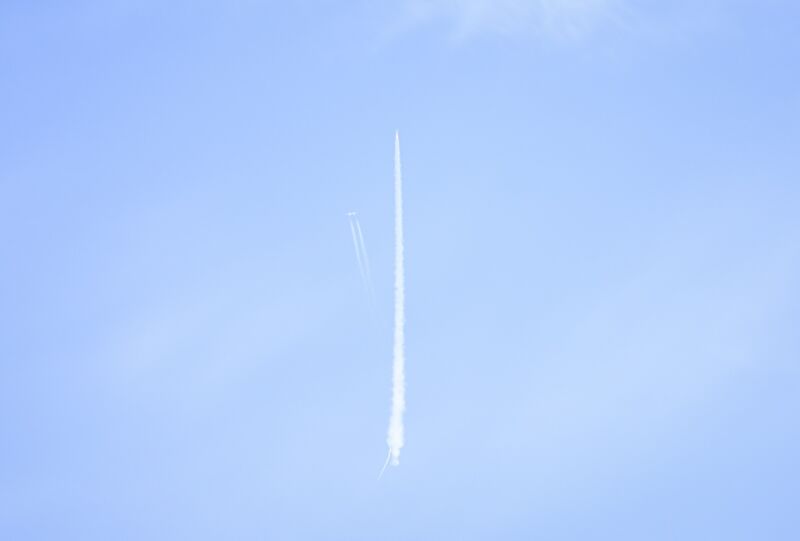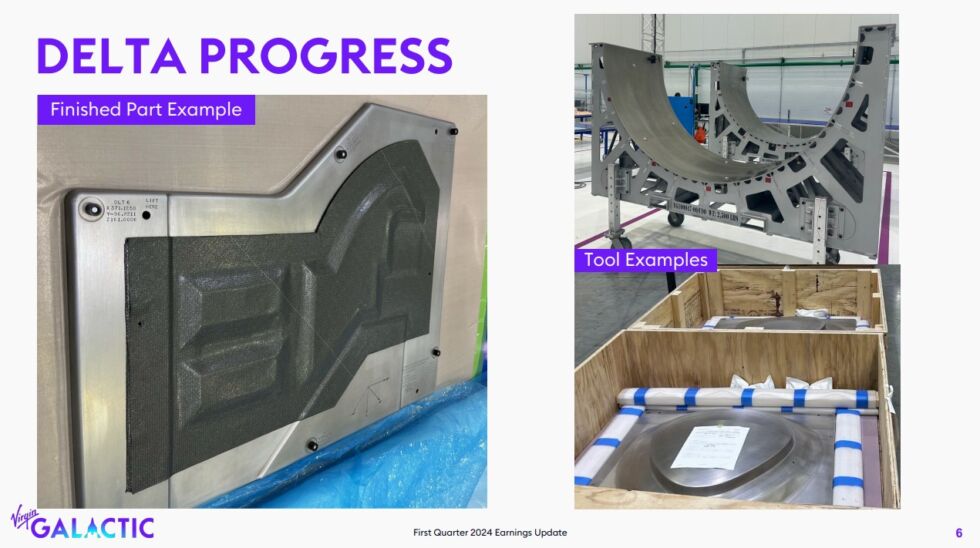
Virgin Galactic
On Saturday, the VSS Unity space plane made its final flight, carrying four passengers to an altitude of 54.4 miles (87.5 km) above the New Mexico desert. The spacecraft will now be retired after just seven commercial space flights, all made within the last year.
Although the flight was characterized by its chief executive Michael Colglazier as a “celebratory moment” for Virgin Galactic, the company now finds itself at a crossroads.
After an impressive but brief flurry of spaceflight activity—seven human spaceflights in a year, even to suborbital space, is unprecedented for a private company—Virgin Galactic will now be grounded again for at least two years. That’s because Colglazier and Virgin Galactic are betting it all on the development of a future “Delta class” of spaceships modeled on VSS Unity.
“The learnings we have built over our last seven space flights have enormously benefited our spaceship design,” he said during a first-quarter earnings call on May 7. “In addition, we have also learned a great deal about the performance of our mothership, VMS Eve.”
Going all in on Delta ships is a bold bet on the future, but it’s by no means a certain one.
The Delta plan
Here are the basic facts: It took Virgin Galactic two decades to build a single space-worthy spacecraft and make a dozen flights above an altitude of 50 miles (80.5 km). During that time, the company consistently missed its targets for vehicle development and flight cadence. With little revenue to speak of, Virgin Galactic loses hundreds of millions of dollars a year (financial statements can be found here).
Now, Virgin Galactic proposes to radically advance its capabilities and reach profitability within a few years.
The company plans to develop two Delta-class spaceships and begin flying them in 2026. These vehicles are designed to be more easily reusable and carry six instead of four passengers. This timeline seems highly ambitious given that at this point, the company is only developing tooling for the vehicles and won’t begin major parts fabrication until later this year.
Virgin Galactic will also place much heavier demands on its aging carrier aircraft, VMS Eve. This specially built vehicle is nearly two decades old and carries the spacecraft above 45,000 feet (13.7 km) before releasing it. After a major enhancement program that took the better part of 2022 and 2023, the company has demonstrated the ability to fly Eve once a month.

Virgin Galactic
However, by 2027, to support the commercial operations of two Delta ships, Colglazier said the company is planning a “targeted maintenance plan” for Eve to support three spaceflights a week and 125 flights a year.
Nominally, Virgin Galactic anticipates that this cadence will allow the company to fly 750 astronauts a year at a price of $600,000 per seat, raising $450 million annually. At its current expenditures, this would allow Virgin Galactic to just about break even. (That is, after it flies out its existing manifest of 600 customers who previously bought tickets at price points of $250,000 and $450,000).
However, there are some concerns with this plan. It assumes the Delta ships start flying on time, which very rarely happens in space development projects. It assumes that Eve holds up to this rigorous flight schedule, which it was not designed for. It assumes a sustained demand for Virgin Galactic’s tourist services, which may in fact be a safe bet. And critically, it assumes there are no accidents or anomalies that result in FAA investigations during testing or commercial flights.
The road to profitability
If all of that happens, Virgin Galactic has plans for additional growth.
The company will develop a third Delta ship in conjunction with a second carrier aircraft, with a target of bringing both vehicles online by 2028. This will allow the company to become profitable and continue to grow its operations beyond the current Spaceport America facility in New Mexico.
“Those numbers are expected to grow substantially as we scale our operations by adding new ships, and expand our operations across multiple spaceports,” Colglazier said of the company’s revenue projections.
Perhaps. But all of this future revenue is predicated on rapid hardware development, a clean test flight program, and exceptionally efficient operations. And it will require significant capital expenditures; in addition to the Delta ships and another carrier aircraft, Virgin Galactic will also need new facilities, including an aircraft hangar and a new astronaut training center. It’s possible this could happen. As of March 31, Virgin Galactic had $867 million in cash, cash equivalents, and marketable securities on hand. That is a couple of years of financial runway—yes, I went there—for Virgin Galactic to find its way.
And who could root against it? Almost exclusively through private investment, the company founded by Richard Branson has brought an honest-to-goodness space tourism business into existence with an impressive rocket that lights in mid-air after being dropped from an aircraft.
There’s a lot to like in what Virgin Galactic has built. But its achievements to date, over the last two decades, are nothing compared to what it is proposing to do over the next five years technically, operationally, and financially.




















+ There are no comments
Add yours